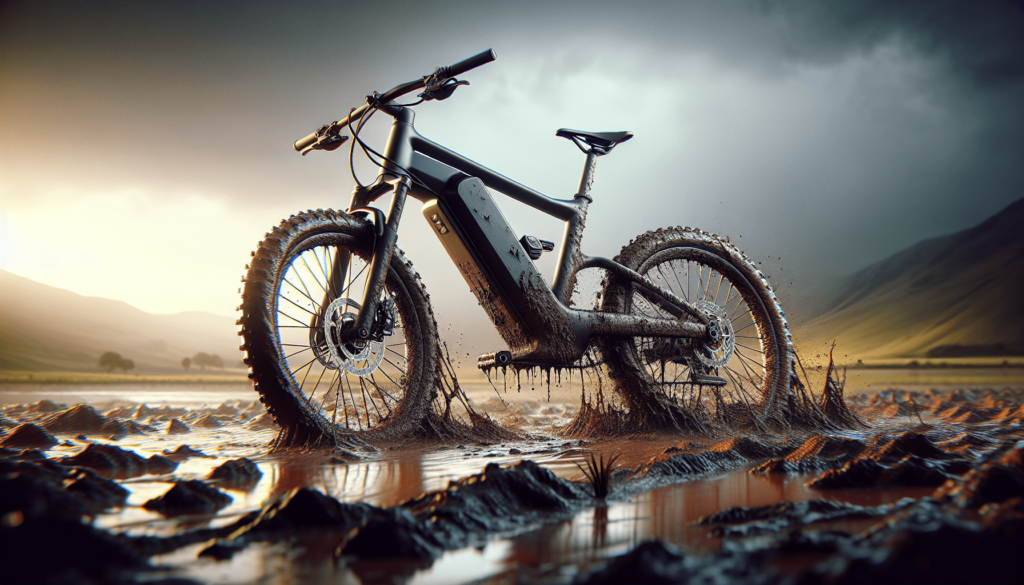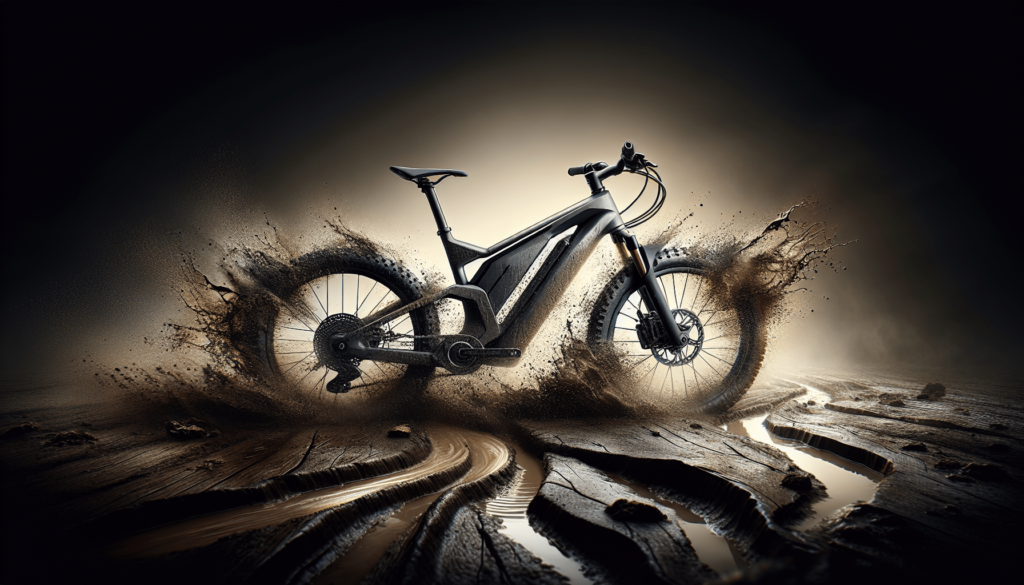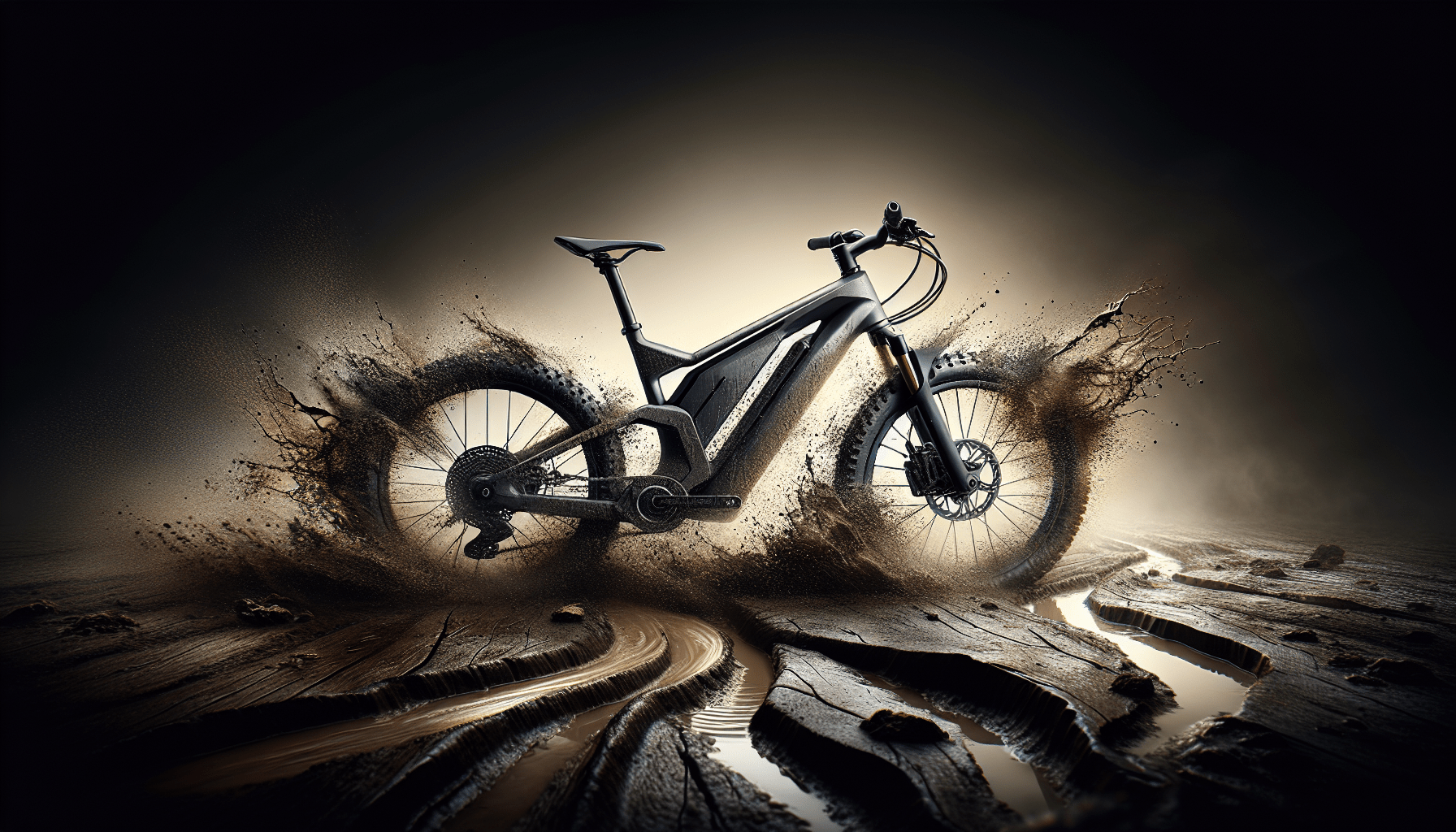Have you ever wondered how e-bikes fare in wet or muddy conditions? Despite the potential challenges that come with inclement weather, e-bikes actually handle surprisingly well in these conditions. The key lies in the design features that make e-bikes well-equipped to navigate through slippery terrain. From specially designed tires for traction to water-resistant components, e-bikes are built to tackle whatever Mother Nature throws their way. So, don’t let a little rain or mud stop you from enjoying your e-bike ride – with the right precautions, you can still have a smooth and enjoyable experience even in less than ideal conditions.
How Do E-bikes Handle Wet Or Muddy Conditions?
Are you curious about how e-bikes perform in wet or muddy conditions? In this article, we will delve into the specifics of how e-bikes handle these challenging terrains. Whether you’re a seasoned e-bike rider or thinking about purchasing one, understanding how e-bikes handle adverse weather conditions is essential. Let’s explore how these electric bicycles navigate through wet and muddy terrain, so you can ride confidently in any weather.
Components of an E-bike
Before we discuss how e-bikes handle wet or muddy conditions, let’s take a look at the key components that make up an e-bike. Understanding the different parts of an e-bike will provide insight into how these electric bicycles are designed to handle various terrains.
E-bikes consist of the following main components:
- Motor: The motor is one of the most crucial components of an e-bike, as it provides the power needed to propel the bike forward.
- Battery: The battery supplies energy to the motor, allowing the e-bike to run on electric power.
- Controller: The controller regulates the flow of electricity from the battery to the motor, controlling the speed and performance of the e-bike.
- Frame: The frame of an e-bike provides structural support and rigidity to the bike.
- Tires: The tires of an e-bike play a significant role in how the bike handles different terrain types.
- Brakes: Brakes are essential for stopping the e-bike safely and effectively.
Now that we have a basic understanding of the components of an e-bike, let’s explore how these components come into play when riding in wet or muddy conditions.
Tires and Traction
When it comes to handling wet or muddy conditions, the tires of an e-bike play a crucial role. E-bikes are equipped with different types of tires, including:
- Slick tires: Slick tires are ideal for riding on paved roads and provide minimal rolling resistance.
- Hybrid tires: Hybrid tires offer a balance between grip and rolling resistance, making them suitable for various terrains.
- Knobby tires: Knobby tires feature a tread pattern that is designed to provide maximum traction on off-road terrain.
In wet or muddy conditions, it is essential to have tires that can grip the ground effectively to prevent slipping. Knobby tires are the best option for handling these challenging terrains, as they offer superior traction and grip. When riding an e-bike in wet or muddy conditions, make sure to check the tire pressure regularly and adjust it as needed to enhance performance.

Motor Power and Performance
The motor of an e-bike plays a significant role in how the bike performs in wet or muddy conditions. E-bikes are equipped with different types of motors, including:
- Hub motors: Hub motors are located in the wheels of the e-bike and provide power directly to the wheels.
- Mid-drive motors: Mid-drive motors are situated in the bike’s crankshaft and provide power to the drivetrain.
- All-wheel drive: Some e-bikes feature all-wheel drive, which provides power to both the front and rear wheels for enhanced traction.
In wet or muddy conditions, the type of motor your e-bike has can impact its performance. Mid-drive motors are known for providing better traction and maneuverability on challenging terrain, making them ideal for riding in wet or muddy conditions. Additionally, all-wheel drive e-bikes offer superior traction and stability, allowing riders to navigate through slippery surfaces with ease.
Battery Life and Range
The battery life and range of an e-bike are essential factors to consider when riding in wet or muddy conditions. Wet or muddy terrain can pose additional challenges that may impact the battery life of your e-bike. Factors such as increased resistance due to wet surfaces and uneven terrain can affect how far you can ride on a single charge.
To optimize your e-bike’s battery life and range in wet or muddy conditions, consider the following tips:
- Lower assist levels: Use lower assist levels on your e-bike to conserve battery power and extend your range.
- Avoid excessive braking: Minimize the use of brakes in wet or muddy conditions to reduce energy consumption.
- Monitor battery level: Keep an eye on your e-bike’s battery level and recharge as needed to ensure you have enough power for your ride.
By following these tips, you can maximize your e-bike’s battery life and range when riding in wet or muddy conditions, allowing you to explore challenging terrain with confidence.

Braking System and Safety
Braking is a critical aspect of riding an e-bike in wet or muddy conditions, as slippery surfaces can affect your ability to stop effectively. E-bikes are equipped with different types of braking systems, including:
- Mechanical brakes: Mechanical brakes use cables to activate the brakes, providing reliable stopping power.
- Hydraulic brakes: Hydraulic brakes use fluid to activate the brakes, offering precise and powerful stopping performance.
In wet or muddy conditions, hydraulic brakes are the preferred option for e-bikes, as they provide better modulation and stopping power on slippery surfaces. Hydraulic brakes offer consistent performance and require less effort to activate, making them ideal for challenging terrains.
To ensure your safety when riding an e-bike in wet or muddy conditions, practice the following braking techniques:
- Anticipate stops: Anticipate stops in advance and brake gradually to prevent skidding on slippery surfaces.
- Maintain distance: Keep a safe distance from other riders and objects to allow for ample braking time.
- Check brake pads: Regularly inspect your e-bike’s brake pads and replace them if they show signs of wear to maintain optimal braking performance.
By following these safety tips and techniques, you can ride your e-bike confidently in wet or muddy conditions while ensuring your safety and the safety of others around you.
Maintenance and Care
Proper maintenance and care are essential for ensuring your e-bike performs well in wet or muddy conditions. Wet or muddy terrain can expose your e-bike to additional wear and tear, making regular maintenance crucial for optimal performance.
To keep your e-bike in top condition when riding in challenging terrains, consider the following maintenance tips:
- Clean your e-bike: Regularly clean your e-bike to remove dirt, mud, and debris that can affect its performance.
- Check tire pressure: Monitor tire pressure regularly and adjust it as needed to ensure optimal traction and handling.
- Inspect components: Periodically inspect the components of your e-bike, including brakes, tires, and drivetrain, for signs of wear or damage.
- Lubricate moving parts: Apply lubricant to moving parts, such as the chain and gears, to reduce friction and extend the lifespan of your e-bike.
By maintaining your e-bike regularly and taking care of its components, you can ensure that it performs well in wet or muddy conditions and enjoy a smooth and safe ride every time.
Conclusion
In conclusion, e-bikes are designed to handle various terrains, including wet or muddy conditions. By understanding how e-bikes navigate through challenging terrain and employing the right techniques and maintenance practices, you can ride confidently in any weather condition. From optimizing tire traction and motor performance to prioritizing safety and maintenance, e-bikes offer a versatile and efficient way to explore the great outdoors. So, the next time you encounter wet or muddy conditions on your ride, remember these tips and enjoy the thrill of conquering challenging terrains with your e-bike!

